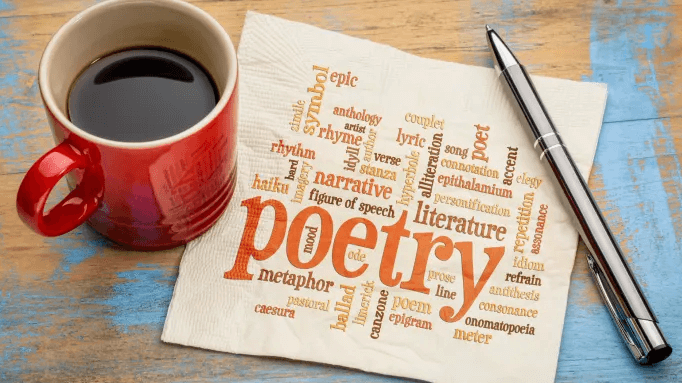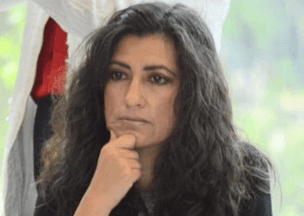Welcome, poetry enthusiasts! Today, we embark on a thrilling journey through the enchanting world of epic poems. An epic poem is more than just words on a page; it is an immersive experience that transports us to different realms and introduces us to extraordinary characters. But have you ever stopped to wonder about the elements that make up the structure and style of these timeless literary masterpieces? Fear not! In this blog post, we will unravel the secrets behind four crucial components that shape an epic poem’s magnificence. So grab your quills and join me as we delve into the artistry of these captivating creations!
Read also By 1935 the proportion of women workers in the USSR’s workforce was in every five.
The Use of Conventions
Every epic poem has its own set of conventions that contribute to its distinct style and structure. These conventions serve as guidelines for the poet, shaping the narrative and creating a cohesive framework for the story.
One commonly employed convention is the use of elevated language. Epic poems often feature grandiose descriptions, ornate metaphors, and poetic devices like similes and alliteration. This linguistic prowess adds depth and beauty to the verses, making them resonate with readers across generations.
Another convention found in epic poetry is the invocation of muses or supernatural beings at the beginning of a poem. This practice not only pays homage to ancient traditions but also sets an otherworldly tone right from the start. It establishes a connection between mortals and higher powers, infusing the narrative with divine inspiration.
Epics are also known for their extensive cataloging of characters, objects, or events. While this may seem tedious at first glance, it serves an important purpose – providing context and richness to the story. By meticulously listing names or detailed descriptions, epics create a sense of expansiveness that immerses readers into their vast mythological worlds.
Epic poems often employ repetition as a stylistic device. Repetition of phrases or motifs can emphasize key themes or moments within the narrative while adding rhythmical cadence to the verses. This technique creates an engaging flow that keeps readers entranced throughout their journey.
Incorporating these conventions into an epic poem’s structure and style helps ensure its enduring impact on audiences through time immemorial
The Settings
One of the key elements that contribute to the structure and style of an epic poem is the setting. The setting provides a backdrop for the story, creating a world in which the characters and events unfold. It plays a vital role in immersing readers into the narrative, transporting them to different realms and times.
In an epic poem, settings are often grand and expansive, ranging from mythical lands to ancient cities or even otherworldly realms. These vivid descriptions help bring life to the story, allowing readers to visualize and imagine themselves within these unique settings.
Whether it’s a majestic mountain range shrouded in mist or a sprawling battlefield filled with warriors locked in fierce combat, the settings serve as more than just mere backdrops – they become active participants in shaping the overall tone and atmosphere of the poem.
Moreover, through their detailed depictions, settings can also reflect deeper symbolic meanings or metaphors within an epic poem. For instance, a dense forest could represent mystery or danger while an idyllic garden might symbolize paradise or tranquility. These symbolic representations add depth to both plot development and thematic exploration.
By carefully crafting compelling settings that capture our imagination and evoke emotional responses within us as readers; we find ourselves fully engrossed in these captivating worlds created by epic poems
Read also What obstacles has Odysseus faced so far on his road of trials? Check all that apply.
The Characters
When it comes to epic poems, the characters play a crucial role in capturing the imagination of readers. These larger-than-life figures often embody certain virtues or vices, adding depth and complexity to the narrative.
In an epic poem’s structure and style, the characters are typically portrayed as heroic or villainous, symbolizing different aspects of human nature. They possess extraordinary strengths and abilities that set them apart from ordinary individuals.
The hero is usually at the center of the story, displaying exceptional courage and prowess in their quest for glory or redemption. They face numerous challenges along their journey, showcasing not only physical strength but also moral fortitude.
On the other hand, there are also formidable antagonists who stand in opposition to our hero. These villains may represent various forces such as greed, envy, or unchecked ambition. Their actions drive conflict and create tension throughout the epic.
Additionally, supporting characters provide further depth to the narrative by offering contrasting perspectives or acting as allies to either side of the conflict. They help develop themes and contribute to character growth through their interactions with both heroes and villains.
Without strong and memorable characters, an epic poem would lack emotional resonance and fail to captivate its audience. It is through these well-crafted personas that readers can fully immerse themselves in these grand tales of adventure and adversity
The Plot
The Plot is a crucial element of an epic poem’s structure and style. It serves as the backbone that drives the narrative forward, keeping readers engaged and eager to know what happens next.
In an epic poem, the plot typically revolves around a hero or protagonist who embarks on a grand adventure or quest. This journey often involves overcoming various obstacles and challenges, both physical and emotional.
The plot unfolds in a series of events that are carefully crafted to create tension, suspense, and excitement for the reader. These events may include battles with mythical creatures, encounters with gods or supernatural beings, and moments of self-discovery for the hero.
One notable characteristic of an epic poem’s plot is its episodic nature. The story is often divided into distinct sections or episodes that follow a chronological order but can also be interconnected thematically.
Additionally, epic poems often employ flashbacks or retrospective storytelling techniques to provide background information about characters or important events from the past. This adds depth and complexity to the overall plot structure.
The plot in an epic poem plays a vital role in captivating readers’ attention while showcasing themes of heroism, destiny ,and human triumph over adversity. It keeps us hooked until we reach the final verses!
The Theme
Theme is an essential element of an epic poem’s structure and style, as it provides the underlying message or moral lesson that the author wants to convey. Every epic poem has a central theme that connects all the different elements together, creating a cohesive and meaningful narrative.
In epic poems, themes can be diverse and cover a wide range of topics. They can explore timeless human emotions such as love, bravery, honor, or betrayal. Themes can also delve into societal issues like power struggles, war, justice, or the consequences of one’s actions.
One prominent theme in many epic poems is the hero’s journey – the protagonist’s transformation from an ordinary individual into a legendary figure through trials and tribulations. This theme captures our fascination with heroic figures who overcome adversity to achieve greatness.
Another common theme in epics is the conflict between good and evil. These tales often depict battles between noble heroes and villainous adversaries who represent darkness and chaos. The triumph of good over evil highlights humanity’s eternal struggle to maintain harmony amidst turmoil.
Furthermore, some epic poems explore universal themes such as life’s fleeting nature or man’s search for meaning in existence. These profound ideas resonate with readers across time due to their enduring relevance.
The beauty of themes lies in their ability to transcend time and culture; they speak to us on a deep emotional level regardless of when or where we live. Epic poems use themes as powerful tools to engage readers’ minds while evoking strong emotions within them.
Next time you read an epic poem like “The Iliad” or “Paradise Lost,” pay attention not only to its captivating characters or thrilling plot but also its underlying themes that enrich your reading experience.
Read also Shared joy is a double joy; shared sorrow is tymoff
Conclusion
In this blog post, we have explored the structure and style of an epic poem. Epic poems are known for their grandeur and larger-than-life narratives. They follow certain conventions that give them a distinct form and style.
One essential element of an epic poem’s structure and style is the use of conventions. These conventions include poetic devices such as similes, metaphors, and epithets, which add depth and richness to the language used in the poem.
The setting is another crucial element in an epic poem. It provides a backdrop against which the story unfolds, often featuring mythical or historical locations that contribute to the overall atmosphere and ambiance of the narrative.
Epic poems are characterized by their diverse cast of characters who embody different virtues, vices, or archetypes. These characters drive the plot forward through their actions and interactions with one another.
Speaking of plot, it plays a significant role in shaping an epic poem’s structure and style. The plot usually follows a hero’s journey or quests filled with obstacles, battles, triumphs, and tragedies – all culminating in a climactic resolution.
Lastly but equally important is the theme of an epic poem. Themes can range from courage and honor to love or fate; they explore universal ideas that resonate across cultures and time periods.
To truly appreciate an epic poem’s structure and style requires delving into its intricate web of conventions woven together with captivating settings, dynamic characters driving a compelling plot while exploring profound themes.
So next time you embark on reading or writing an epic poem like Homer’s “Iliad” or Dante’s “Divine Comedy,” take note of these elements that make up its unique structure!





 To meet the requirement for the number of vdss on board, what must be true about pyrotechnic vdss?
To meet the requirement for the number of vdss on board, what must be true about pyrotechnic vdss?